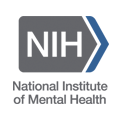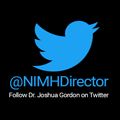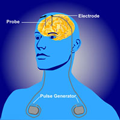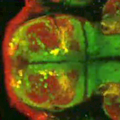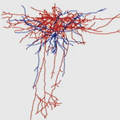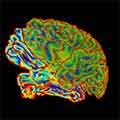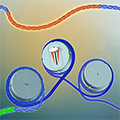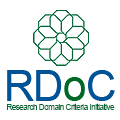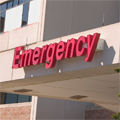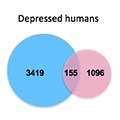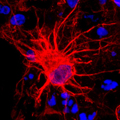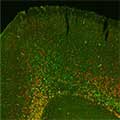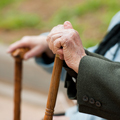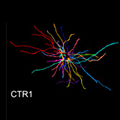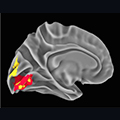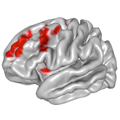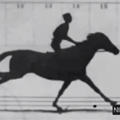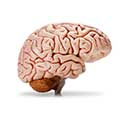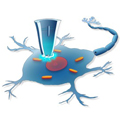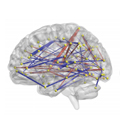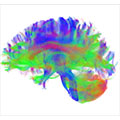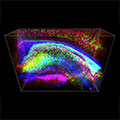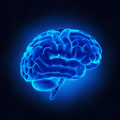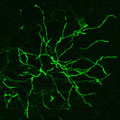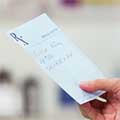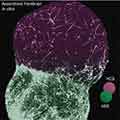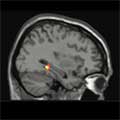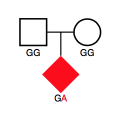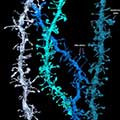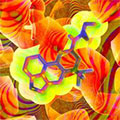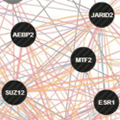Science Updates from 2017
- Different Approaches to Understanding and Classifying Mental Disorders
-
Research in a wide range of disciplines supports the idea that mental disorders result from the complex interplay of biological, developmental, social, and environmental processes; however, the more we learn about mental disorders, the more we realize there are still gaps in our understanding of how best to classify, diagnose, and treat them.
- Leading Neuropsychopharmacology Organization Promotes NIMH Director to Fellow Status
-
Joshua A. Gordon, M.D., Ph.D., Director of NIMH, has been promoted to Fellow status by the American College of Neuropsychopharmacology based on his scientific reputation, contributions to the College through committee work and involvement in the Annual Meeting program.
- NIMH Director Joshua Gordon Elected to Rank of AAAS Fellow
-
American Association of the Advancement of Science (AAAS) to induct Dr. Gordon and other recipients in February ceremony.
- NIH Announces Awards for BRAIN Initiative Neuroethics Research
-
The NIH BRAIN Initiative has awarded grants to five teams of experts who will study the neuroethical issues surrounding the use of deep brain stimulation in neuropsychiatric and movement disorders and appropriate consent for brain research.
- Brain’s Alertness Circuitry Conserved Through Evolution
-
Using a molecular method likely to become widely adopted by the field, researchers have discovered brain circuitry essential for alertness – and for brain states more generally.
- NIH BRAIN Initiative Launches Cell Census
-
The NIH today launched a major effort to discover and catalog the brain’s “parts list.”
- NIH BRAIN Initiative Builds on Early Advances
-
NIH has announced funding for 110 new awards totaling $169 million for the BRAIN Initiative.
- NIH Completes Atlas of Human DNA Differences that Influence Gene Expression
-
NIH researchers have completed an atlas documenting how DNA influence human gene expression.
- NIMH Releases Strategic Research Priorities Update
-
National Institute of Mental Health (NIMH) recently released its second annual update of the Strategic Research Priorities.
- RDoC Webinar - Using the RDoC Framework in Developmental Research
-
NIMH’s Research Domain Criteria (RDoC) Unit hosts a webinar titled “Using the RDoC Framework in Developmental Research.”
- Life-Saving Post-ER Suicide Prevention Strategies are Cost Effective
-
Three interventions designed for follow up of patients who are identified with suicide risk in hospital emergency departments save lives and are cost effective relative to usual care.
- Depression’s “Transcriptional Signatures” Differ in Men vs. Women
-
Brain gene expression associated with depression differed markedly between men and women. Such divergent “transcriptional signatures” may signal divergent underlying illness processes requiring sex-specific treatments.
- RDoC Webinar - Reward Sensitivity and Depression: From Mechanism to Implementation
-
NIMH’s Research Domain Criteria (RDoC) Unit, the Delaware Project, and the Association for Behavioral and Cognitive Therapies (ABCT) conduct the second webinar in a series examining the science-to-service pipeline in psychology and psychiatry.
- Scientists Give Star Treatment to Lesser-Known Cells Crucial for Brain Development
-
Star-shaped support brain cells, astrocytes, growing in 3-D “organoids” in a dish develop similarly as those in human brain tissue.
- Breakthrough Method Yields Trove of Neuron Subtypes, Gene Regulators
-
Scientists have discovered a trove of neuronal subtypes by identifying their unique epigenomic signatures.
- Mood Stabilizing Medications an Effective Option for Older Adults with Bipolar Disorder
-
Two standard medications for bipolar disorder were effective in controlling symptoms at doses tailored to older people in a clinical trial of treatment in adults over age 60.
- Patient-Derived Support Cells Stunt Mouse Brain Development
-
Support cells generated from patients with childhood onset schizophrenia stunted neural circuit development when grafted into developing mouse brains.
- Our Brains Harbor “Residual Echo” of Neanderthal Genes
-
Researchers have produced the first direct evidence that parts of our brains implicated in mental disorders may be shaped by a “residual echo” from our ancient past. The more a person’s genome carries genetic vestiges of Neanderthals, the more certain parts of his or her brain and skull resemble those of humans’ evolutionary cousins that went extinct 40,000 years ago.
- Guidelines published for treating PANS/PANDAS
-
An expert panel has published guidelines for treatment of Pediatric Acute Onset Neuropsychiatric Syndrome (PANS) and a subset of patients diagnosed with PAN Disorder Associated with Streptococcal Infection (PANDAS).
- Webinar: RDoC - Fear & Anxiety: From Mechanisms to Implementation
-
This November 2016 RDoC webinar highlights the role of fear and anxiety in disorders such as phobias and depression.
- Imaging Pinpoints Brain Circuits Changed by PTSD Therapy
-
Using brain imaging to track the effects of treatment of post-traumatic stress disorder (PTSD), scientists have identified a brain circuit on which a frequently used and effective psychotherapy (prolonged exposure) acts to quell symptoms. The findings help explain why the neural circuit identified is a promising target for additional treatment development, including brain stimulation therapies.
- Scientists Replay Movie Encoded in DNA
-
For the first time, a primitive movie has been encoded in – and then played back from – DNA in living cells. It’s a major step toward a “molecular recorder” that may someday reveal secrets of the developing brain.
- The NIH NeuroBioBank: Addressing the Urgent Need for Brain Donation
-
The directors of the Eunice Kennedy Shriver National Institute of Child Health and Human Development, the National Institute of Mental Health, and the National Institute of Neurological Disorders and Stroke discuss the importance of post-mortem brain donation in a joint message.
- NIH Names Winners of “Follow that Cell” Phase 2 Competition
-
Two biological engineering researchers are winners in Phase 2 of NIH’s Follow that Cell Challenge. The winners will share $400,000 in prizes awarded for development of new tools and methods for predicting the behavior and function of a single cell in complex tissue over time – and how that reflects the health of the tissue.
- Neuroimaging Technique May Help Predict Autism among High-Risk Infants
-
Functional connectivity magnetic resonance imaging (fcMRI) may predict which high-risk, 6-month old infants will develop autism spectrum disorder (ASD) by age 2 years.
- Brain Circuit Tweak Wins Her Affection (if she’s a vole)
-
For the first time, neuroscientists have boosted a female rodent’s partnering with a male by stimulating connectivity of a brain reward circuit. Understanding the circuitry of such affiliative behaviors may lead to improved treatments for social impairment in severe mental disorders, such as autism spectrum disorder.
- Connections Strengthen Within Specialized Networks as Brain’s Executive Function Matures
-
As we grow up, our brain’s specialized networks become more structurally segregated, contributing to improved executive functioning. These densely interconnected “modules” process information for key functions that underlie development of mental control and self-regulation.
- Pediatrics-based Brief Therapy Outdoes Referral for Youths with Anxiety and Depression
-
A streamlined behavioral therapy delivered in a pediatrics practice offered much greater benefit to youth with anxiety and depression than a more standard referral to mental health care with follow-up in a clinical trial comparing the two approaches.
- NIMH Grantee Wins One of Science’s Most Coveted Prizes
-
NIMH grantee Karl Deisseroth, M.D., Ph.D., of Stanford University, has been awarded one of science’s most generous prizes. A German foundation presented the inventor of technologies that are transforming neuroscience with its 4 million euros Fresenius Prize.
- NIMH to Host Multimodal Brain Stimulation Speaker Series
-
Beginning May 31, 2017, the National Institute of Mental Health (NIMH) will launch a speaker series intended to bring together leaders in the field conducting research using non-invasive brain stimulation and functional imaging including EEG, fMRI, and transcranial magnetic stimulation (TMS).
- Brain “Relay” Also Key to Holding Thoughts in Mind
-
Long overlooked as a mere “relay,” an egg-like structure in the middle of the brain also turns out to play a pivotal role in tuning-up thinking circuity. A trio of studies in mice are revealing that the thalamus sustains the ability to distinguish categories and hold thoughts in mind. It might even become a target for interventions for psychiatric disorders marked by working memory problems, such as schizophrenia.
- Prescribing Patterns Change Following Direct Marketing Restrictions
-
A study of how policies restricting pharmaceutical promotion to physicians affect medication prescribing found that physicians in academic medical centers (AMCs) prescribed fewer of the promoted drugs, and more non-promoted drugs in the same drug classes, following policy changes to restrict marketing activities at those medical centers.
- Emergency Departments Could Play Significant Role in Reducing Suicide Attempts
-
Research funded by the National Institute of Mental Health (NIMH) shows hospital emergency departments can play a vital role in lowering the number of suicide attempts among adults by as much as 30 percent.
- Human Forebrain Circuits Under Construction – in a Dish
-
Neuroscientists have created a 3D window into the human brain’s budding executive hub assembling itself during a critical period in prenatal development.
- Estrogen Alters Memory Circuit Function in Women with Gene Variant
-
Brain scans reveal that fluctuations in estrogen can trigger atypical functioning in a key brain memory circuit in women with a common version of a gene. Since working memory function is often disturbed in mental disorders, such gene-hormone interactions are suspect mechanisms that may confer risk.
- Potential Source of HIV Persistence Confirmed
-
Scientists have shown that a class of immune cells not thought to be a primary reservoir for HIV can harbor the virus even following antiretroviral treatment (ART).
- Higher Death Rate Among Youth with First Episode Psychosis
-
A new study shows that young people with first episode psychosis have a much higher death rate than previously thought. Researchers looked at people aged 16-30 and found that the group died at a rate at least 24 times greater than the same age group in the general population.
- Delayed Walking May Signal Spontaneous Gene Anomalies in Autism
-
Researchers have discovered a pattern of genetic glitches and behavioral features, such as delayed walking, in some cases of autism spectrum disorder (ASD) that could ultimately lead to identification of subgroups and improved treatment.
- A Third of Suspect Mutations in ASD Just “Noise”
-
Researchers have narrowed suspected genetic causes of autism and related developmental disabilities by ruling out what they call the “noise of benign variation.”
- Sleep May Trim Neural Connections to Restore Learning Ability
-
Sleep may be the price we pay for the ability to learn. It streamlines neural connections for optimal efficiency.
- Revealed: LSD Docked in its Human Brain Target
-
Scientists have discovered the molecular structure of LSD in its human brain receptor.
- Two NIMH Grantees Receive Prestigious Presidential Award
-
The National Institute of Mental Health (NIMH) congratulates two NIMH grantees, Mary Kay Lobo from the University of Maryland School of Medicine and Eric Morrow from Brown University, who are among the 102 scientists and researchers receiving the 2017 Presidential Early Career Award for Scientists and Engineers (PECASE).
- Sex Hormone–Sensitive Gene Complex Linked to Premenstrual Mood Disorder
-
Researchers have discovered molecular mechanisms that may underlie a woman’s susceptibility to disabling irritability, sadness, and anxiety in the days leading up to her menstrual period.

